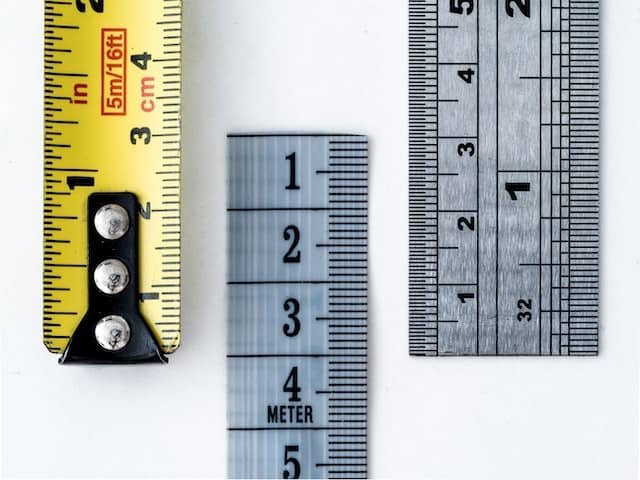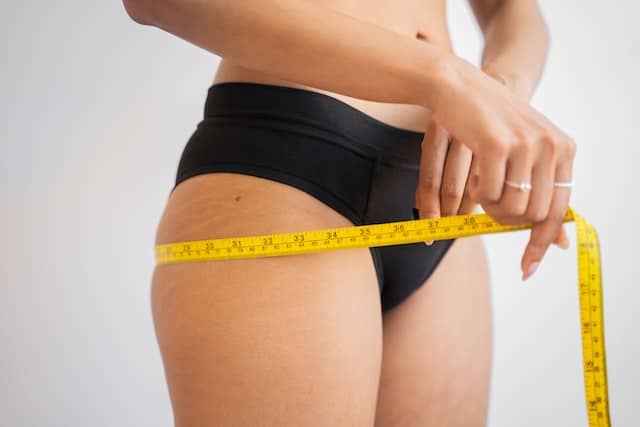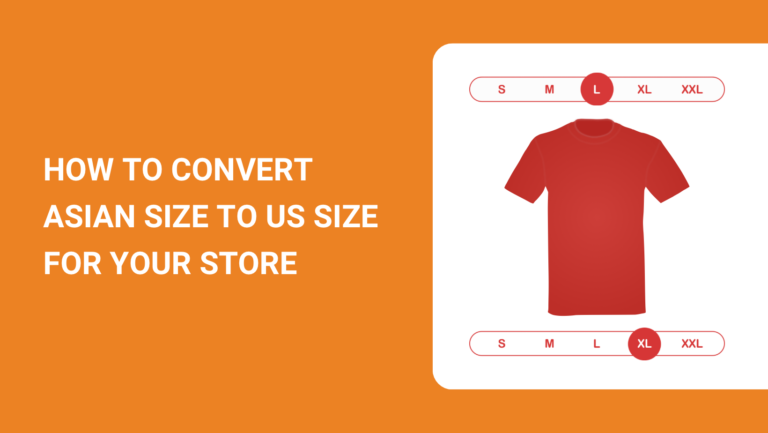Asia has positioned itself globally as a leading manufacturer of consumer products. Clothing manufacturing in Asia is a booming business that has contributed not only to its economy but also globally.
Sourcing clothes and shoes from Asia has become a walk in the park. However, size differences are a handful, making retailers lose customers and prospects.
So how do you avoid it? Simple: by learning how to convert sizes between regions. Sounds easy, right? It is pretty straightforward.
This guide explains why there are different sizes and how best to navigate this challenge and become a renowned online retailer. Let’s dive into it.
What Is Size Conversion?

Size conversion means converting units of measurement from one region to corresponding units in another. Size conversion mostly deals with apparel and shoes, but is not only limited to these products.
As an online retailer, size conversions are a big part of your business; hence, you need to understand the concept well. Since we lack a universal size guide, you must work with conversions.
Your customers expect to get all the necessary specifications before placing an order. Size is among the necessary information a product should display.
Also, if you are sourcing clothes from Asia, you should consider the size differences between Asia and other regions. Asian sizes tend to be smaller than other regions, especially compared to the US. So, you have to get it right or else risk losing prospects and regular customers.
Why Is Sizing Conversion Important?

Sizing conversion plays a vital role in e-commerce. Every region has differences in height, body size, and units of measurement. All these factors will determine if a consumer is going to consider your store.
So how do you ensure you attract customers from all over the world? By using conversion charts. The following are some of the reasons why sizing conversion charts are important.
- User Experience – sizing conversions promote a positive user experience on your website. When customers find something they like in your store, it will be easier for them to order the item if the sizes are clear. Hence, using sizing conversion charts on your website is a smart move for any retailer. You are guaranteed a repeat customer if the user experience is positive.
- Lowers Return Rates – When customers buy clothes that don’t fit, be sure you will have several returns, which will affect your business and reputation in the market. Using the correct size conversion units will eliminate returns concerning fittings since clients will order items in their sizes, whether they are local or international customers.
- Marketing Strategy – if your store is convenient for customers, they will help market your brand by word of mouth and recommendations. Ensure your sizing conversion charts are easily accessible and easy to use.
- Smoothens operations – when you use size conversion charts, you limit the return of products. This helps in smoothening the process in your business. If you get returns frequently, it interferes with the flow of products and in turn, affects profits.
- Business growth – sizing charts are a positive impact on any business. It is not the only factor for business growth, but it is definitely a big contributor to how customers perceive your store. Your business will grow steadily if you incorporate sizing conversion charts.
Difference between Asian and US Size Systems

Size issues arise when a retailer is sourcing goods from one region and selling them to a different region. Due to differences such as height and chest size across the globe, clothing and shoes may become challenging to order when you are not sure of the specific measurements of another country.
For instance, a size M in the US might translate into a size L in Asia. These differences are a huge contributor to how customers perceive your store. Are they able to get their correct sizes from your website?
Below are some differences you can expect between Asian and US size systems.
The Use of Different Measurement Units
Each region has its own way of assigning sizes to apparel and shoes. The difference makes it challenging for people to buy clothes that fit properly online. Some regions use letters, others, centimeters, inches, and so on.
Recognizing if it is in centimeters or inches is quite easy. If a number is above 60, then it is in centimeters, and if it’s below, then most probably the size is in inches. So if you want to convert from centimeters to inches or to US size charts, the simple trick is as follows:
- Divide the centimeters by 2.54 to convert it to inches. For example, size 76 will be 29.9 inches. To get centimeters from inches, you do the reverse; you multiply by 2.54.
- To convert from inches to US sizes is even easier. You subtract 21 from the inches. So if you have a size 31, you will get a size 10 in US size system and vice versa.
Differences in Size Ranges and Standards
- China – clothes in China sometimes have two labels; one representing the height and the second representing the chest circumference. For instance, a size of 160-165 /84-86 corresponds to a small in US. Sizes such as extra large in US might lack a corresponding size in China. However, some clothing manufacturers can provide this size. The sizes in China are usually in centimeters.
- Japan – the sizing system in Japan uses letters representing extra small to extra large (XS-XL), just like in the US. However, you must remember that the sizes run smaller compared to US. Additionally, they also use a two-numbered system. For instance, a size 38/9 is equivalent to a small in US.
- Korea – the Korean size system is quite straightforward. They use a double number for their sizes, e.g., a size 44 corresponds to XS in US.
The Impact of Cultural and Societal Factors on Size Preferences
Culture and societal factors can also play a role in clothing sizes. First, factors such as religion, technology, climate, history, and more can influence culture. These aspects impact how individuals and societies dress.
For instance, if you compare the US to Asian countries, there is a difference in the dress code. People from the US are quite liberal and may, in turn, choose to wear small-sized clothing. On the other hand, most Asian countries are reserved, leading to some of them wearing longer-sized clothing.
The idea of small or large clothing may differ from region to region.
Charts of Common Size Conversions

Women’s Clothing
| US | Japan | Korea | China | International |
| 4-6 | S / 36 / 5-7 | 44 | 160-165 / 84-86 | XS |
| 8-10 | S / 38 /9 | 55 | 165-170 / 88-90 | S |
| 12-16 | L / 40/ 11 | 66 | 167-172 / 92-96 | M |
| 18-20 | L, XL /42 / 13 | 77 | 168-173 / 98-102 | L |
| 22-24 | XXL /3L /15 | 88 | 170-176 / 106-110 | XL |
| 26-28 | 4L/17, 5L/19 | XXL |
Men’s Clothing
| US | Japan | Korea | China | International |
| 14-14.5 | S/36, S/37 | 90 | XS | |
| 15-15.5 | M/38, M/39 | 95 | 165/ 88-90 | S |
| 15.5-16 | L/40, L/41 | 100 | 170/ 96-98 | M |
| 16.5-17 | L, XL / 42, 43 | 105 | 175/ 108-110 | L |
| 17.5 | 44 | 110 | 180/ 118-122 | XL |
| 185/ 126-130 | XXL |
Children’s Clothing
| US | Japan | Korea | China | EU (cm) |
| 4 | 100 | 7 | 105 | 98-104 |
| 5 | 110 | 9 | 115 | 104-110 |
| 6 | 110 | 9 | 115 | 110-116 |
| 7 | 120 | 11 | 125 | 116-122 |
| 8 | 120 | 13 | 125 | 122-128 |
| 10 | 130 | 13 | 135 | 128-134 |
| 12 | 140 | 15 | 145 | 134-140 |
| 14 | 150 | 17 | 155 | 140-146 |
| 16 | 160 | 17 | 165 | 16-152 |
Women’s Shoes
| US | Japan | Korea | China | India |
| 1-1.5 | 18-18.5 | 180-185 | 31-31.5 | |
| 2-2.5 | 19-19.5 | 190-195 | 32-32.5 | 0-0.5 |
| 3-3.5 | 20-20.5 | 200-205 | 33-33.5 | 1-1.5 |
| 4-4.5 | 21-21.5 | 210-215 | 34-34.5 | 2-2.5 |
| 5-5.5 | 22-22.5 | 220-225 | 35-35.5 | 3-3.5 |
| 6-6.5 | 23-23.5 | 230-235 | 36.5-37 | 4-4.5 |
| 7-7.5 | 24-24.5 | 240-245 | 37.5-38 | 5-5.5 |
| 8-8.5 | 25-25.5 | 250-255 | 39-39.5 | 6-6.5 |
| 9-9.5 | 26-26.5 | 260-265 | 40-40.5 | 7-7.5 |
| 10-10.5 | 27-27.5 | 270-275 | 41.5 | 8-8.5 |
| 11-11.5 | 28-28.5 | 280-285 | 42.5-43.5 | 9-9.5 |
| 12-12.5 | 29-29.5 | 290-295 | 44-44.5 | 10-10.5 |
| 13-13.5 | 30-30.5 | 300-305 | 45.5-46 | 11-11.5 |
| 14-14.5 | 31-31.5 | 310-315 | 46.5-47 | 12-12.5 |
| 15-15.5 | 32-32.5 | 320-325 | 47.5-48.5 | 13-13.5 |
| 16-16.5 | 33-33.5 | 330-335 | 49-49.5 | 14-145 |
| 17 | 34 | 340 | 50 | 15 |
Men’s Shoe Size
| US | Japan | Korea | China | India |
| 0.5-1 | 19-19.5 | 190-195 | 32-32.5 | 0-0.5 |
| 1.5-2 | 20-20.5 | 200-205 | 33-33.5 | 1-1.5 |
| 2.5-3 | 21-21.5 | 210-215 | 34-34.5 | 2-2.5 |
| 3.5-4 | 22-22.5 | 220-225 | 35-35.5 | 3-3.5 |
| 4.5-5 | 23-23.5 | 230-235 | 36.5-37 | 4-4.5 |
| 5.5-6 | 24-24.5 | 240-245 | 37.5-38 | 5-5.5 |
| 6.5-7 | 25-25.5 | 250-255 | 39-39.5 | 6-6.5 |
| 7.5-8 | 26-26.5 | 260-265 | 40-4.5 | 7-7.5 |
| 8.5-9 | 27-27.5 | 270-275 | 41.5 | 8-8.5 |
| 9.5-10 | 28-28.5 | 280-285 | 42.5-43.5 | 9-9.5 |
| 10.5-11 | 29-29.5 | 290-295 | 44-44.5 | 10-10.5 |
| 11.5-12 | 30-30.5 | 300-305 | 45.5-46 | 11-11.5 |
| 12.5-13 | 31-31.5 | 310-315 | 46.5-47 | 12-12.5 |
| 13.5-14 | 32-32.5 | 320-325 | 47.5-48.5 | 13-13.5 |
| 14.5-15 | 33-33.5 | 330-335 | 49-4.5 | 14-14.5 |
| 15.5 | 34 | 340 | 50 | 15 |
Tips for Converting Asian Sizes to US Sizes

Seeking Out Sizing Information from the Seller
The first step to take as a retailer is to seek out sizing clarification from your supplier. Reliable suppliers will have size conversion charts for all their products, so it is wise to consult them before buying.
If you can’t get the size charts from your supplier, search for the product on other platforms. You might get sizing charts that you can use. However, retailers should be working with suppliers who will provide them with every necessary piece of information.
If that’s not the case, it is best to either switch suppliers, ask for a conversion chart to be generated, or contact a sourcing agent to help find a suitable supplier.
Making the Sizing Information Super Clear
It’s a no-brainer that size information is vital to your business. Making this information super clear is a priority for any retailer. On your website, ensure the chart is clearly visible and understandable.
Clear charts will help your brand retain customers since they will relate easily to your website when buying items. Additionally, ensure that the information available is accurate.
Since there are size differences, your customers might end up with a smaller fit than usual, leading to lots of returns and the loss of potential long-term clients.
Furthermore, if you can’t get a reliable chart to display, you can do the conversions yourself.
Using Shopify Size Chart Apps

Size conversion apps make the work easier for retailers and buyers. You can now order that dress you’ve been eyeing for months with the perfect fit. Shopify has developed some apps that facilitate such conversions. These apps are designed to
- Lower returns rates due to sizing issues.
- Aid buyers in making the right decisions when ordering apparel online.
- Help retailers retain and attract more buyers to their stores.
- Assist retailers in knowing product descriptions.
The apps are as follows:
- AVADA Size Chart – The app is free to use and has 11 templates to use on your site. The sizes cut across men, women, and children. Also, the charts are easily customizable to suit your preferences.
- Size Matters by Eastside Co – The app allows one to create unlimited-size tables to avoid long paragraphs of information. Also, admins can customize and add information to the charts that suit their brand. The app is also free.
- Best Fit Size Charts – If you want to generate a size chart with a wider range of products, then Best Fit is the best fit. Product sizes range from bras, shorts, necklaces, shoes, hats, and more. It permits sellers to display a link to the chart on the product for easier usage. However, you will have to part with some money to use this app. Their prices range from a free plan, a premium plan ($4.99/month), and a development plan that you use with a paid Shopify plan.
- Uplara – this app aids buyers in finding their fit by their different body shapes and sizes. It is an ideal app, especially if you sell apparel to various body types. It gives recommendations to every customer and is compatible with every device. Furthermore, it is absolutely free.
- Size Chart Tabs – this app generates and displays size charts, organizes product listings, and displays return policy and product information. The app has easily customizable navigation tabs. The price ranges from a free plan, a starter plan ($4.99/month), a pro plan ($11.99/month), and a business plan ($79.99/month).
FAQs on Asian Size to US Size
How Do US and Asia Sizes Compare?
Asian sizes are typically smaller than American sizes. Asians are smaller in body size than Americans; hence, their sizes run smaller than American ones. Size conversion charts can be used to determine the exact corresponding size.
Can I Go for an Asian ‘One Size’ or ‘Free Size’ Clothing?
If you are originally from Asia, then you might consider it. However, if you are not, it is best to avoid clothing labeled “free size” or “one size.” Asians are generally smaller and more petite; hence, the clothes might not fit you.
How Do I Convert Asian Size to US Size?
As a retailer, if your supplier is from Asia, you can request conversion charts from them. This way, you will get accurate information for your customers. However, if that’s unavailable, you can get a reliable size conversion chart and do it yourself.
Additionally, Shopify provides retailers with several apps to use on their online stores to help with conversions.
Which Parameters Do Sizes Include?
Shoe sizes comprise length and width, while clothing sizes comprise chest circumference (bust), waist, height, and even leg circumference. All these parameters contribute to the final size of certain apparel.
Conclusion
The process of converting sizes from one region to another seems a bit tiring; however, successful e-commerce retailers understand the need for such knowledge. Most apparel is usually sourced from Asian countries; hence, sizing conversion is something you will encounter as an online entrepreneur.
For your business to prosper, you must grasp this concept to ensure you pass the right information to your customers. If you need help sourcing suppliers that make work easier for you, you are in the right place.
At NicheSources, we are ready to help you get started with a supplier who will offer you the best products with the correct sizing conversion charts to help you retain and win new customers.
You can easily start with a free quote, and we’ll take it from there. Thank you for joining us.

